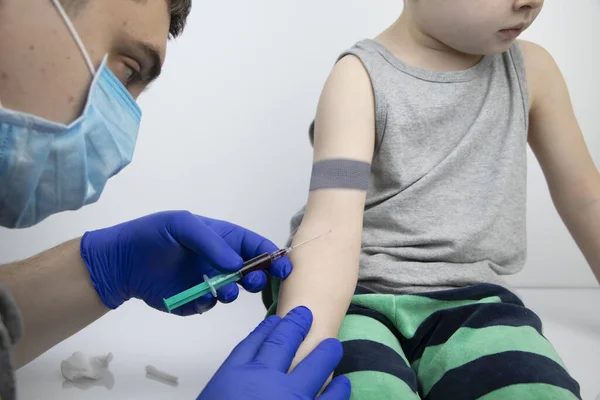
Child health: basic analyzes
As you know, most children “do not like” to come to medical institutions, and examining a child is another challenge for parents. In such conditions, the diagnosis of small patients should be based on the principle of “all at once”. But what analyzes are we talking about if the goal is a preventive examination of the child’s health?
Complete blood count with leukocyte count
Many parents are already familiar with this analysis, because it is prescribed for any inflammation, including ARVI, to assess the severity and origin (viruses / bacteria) of the process.
However, the analysis can reveal other common problems, such as anemia and dehydration.
Anemia in children is most often of iron deficiency. And the lack of a trace element reduces the body’s resistance to infections, both bacterial and viral, and also slows down recovery. Therefore, children with anemia often belong to the category of frequently ill, and their “sick leave” is delayed for 2-3 weeks.
With anemia, the condition of the skin (dryness, flaking, inflammation) and its healing, as well as hair loss, are also observed. And the general condition of the child, depending on the severity of the pathology, can vary between slightly increased fatigue and noticeable weakness.
Anemia in a blood test is indicated by a decrease in erythrocytes and hemoglobin, as well as deviations in erythrocyte indices (MCV, MCH, MCHC), a decrease in which is more often associated with iron deficiency.
You can check your iron levels with an appropriate blood test. True, the study allows you to identify only the existing deviations of iron, but does not make it possible to predict the risk of their occurrence.
A blood test for ferritin does not have such a deficiency, since it reflects not the concentration of iron in the blood, but its reserves in the body. A decrease in the indicator indicates the depletion of “iron stores”, and “warns” of a high risk of anemia long before the onset of symptoms.
General analysis of urine and feces
General urine analysis is undeservedly considered by many to be “secondary”, because most often referral to it is associated with the already existing symptoms of urinary infection (frequent urination, burning sensation, and others).
At the same time, the analysis allows you to detect some formidable kidney diseases (for example, glomerulonephritis) at a very early stage, in the absence of any symptoms. And a doctor’s consultation requires the appearance of red blood cells and an increase in protein in the urine.
The appearance of bilirubin in the urine and an increase in urobilinogen indicate liver or gallbladder disease, or the destruction of red blood cells (hemolysis), and ketones and glucose are markers of possible diabetes or other metabolic pathology.
Diagnostics of helminthiasis
It is no secret that children often ignore simple sanitary rules, both with regard to “dirty hands” and some food products (berries, fruits, and others). Therefore, it is not surprising that it is precisely “small” patients that constitute the main risk group for helminthiases.
In this case, the infection does not appear immediately. And only after a while, symptoms of allergies, skin pathologies, deficiency conditions (lack of iron, vitamins, and so on) and other nonspecific pathologies may appear.
And some of the helminths are capable of dwelling in the liver and even in the brain, forming cysts and destroying the organ.
You can check the presence of helminths by analyzing feces by the enrichment method (PARASEP), which makes it possible to detect 16 types of parasites, or by a blood test for IgG antibodies to the most common of them (for example, the “Diagnosis of Parasitic Diseases” complex).
It should be remembered that these studies do not exclude, but mutually complement each other. Since the “tricks” of the life cycle of parasites do not always allow the detection of their eggs in the material, and the “special relationship” with the immune system of the infected can block the synthesis of specific antibodies.
Screening for endocrinological pathology
Diabetes mellitus today “spares” neither adults nor children and is the most common endocrinological problem.
At the same time, type 1 diabetes, unfortunately, implies lifelong insulin therapy, while type 2 is curable in the early stages.
Therefore, it is worth including a blood test for glucose or, better, glycated hemoglobin, which reflects the average level of “sugar” over the last 3 months, in the list of basic analyzes of the child’s health.
Thyroid problems are in second place after diabetes.
The thyroid gland https://en.wikipedia.org/wiki/Thyroid controls all metabolic processes in the body and affects mental abilities. And a lack of thyroid hormones can lead to weight gain, decreased learning ability, and many other problems.
And to assess the “health” of the gland, a blood test for TSH, T4 and T3 free is required.
As you know, most children “do not like” to come to medical institutions, and examining a child is another challenge for parents. In such conditions, the diagnosis of small patients should be based on the principle of “all at once”. But what analyzes are we talking about if the goal is a preventive examination of…